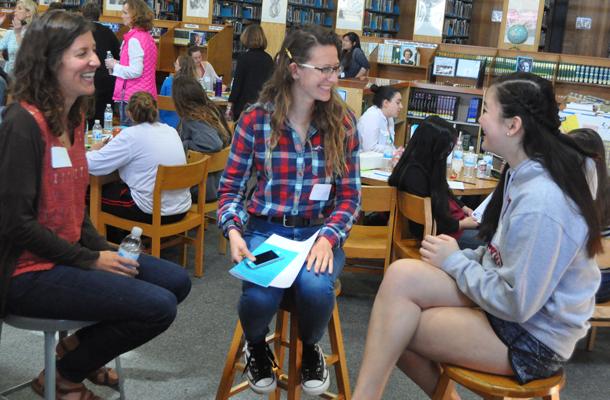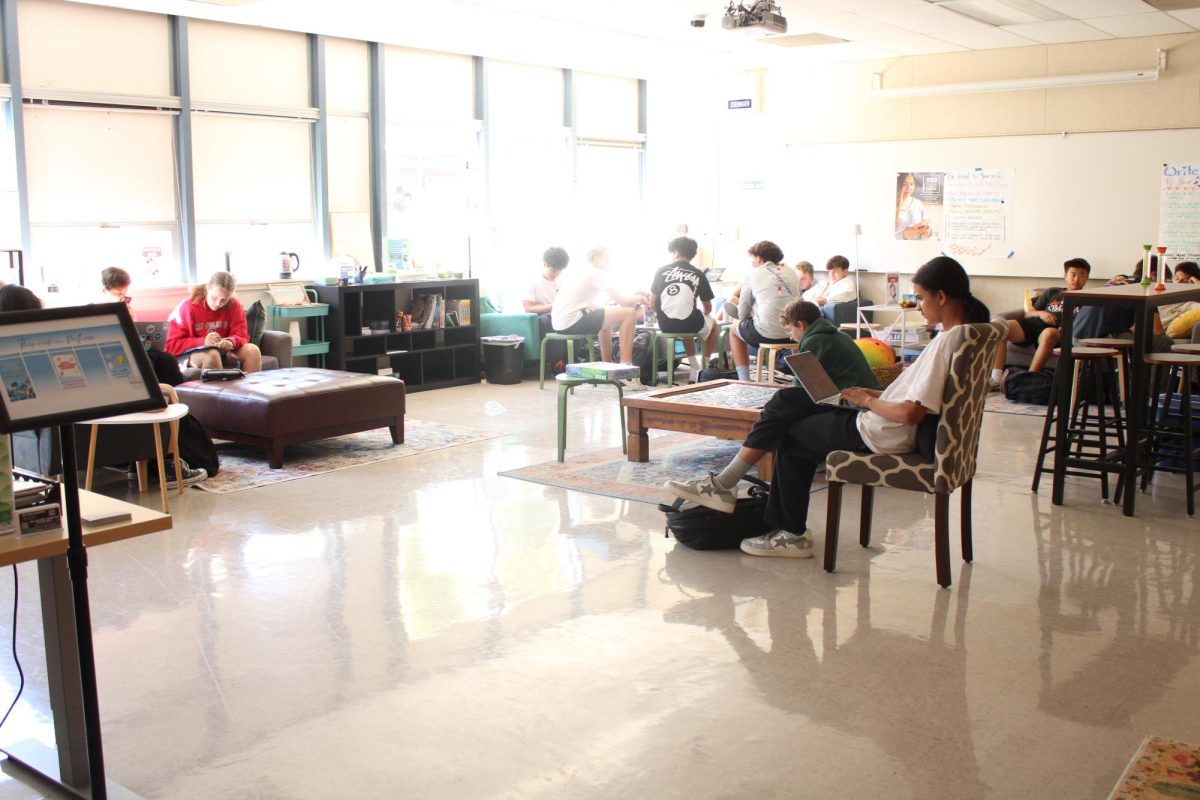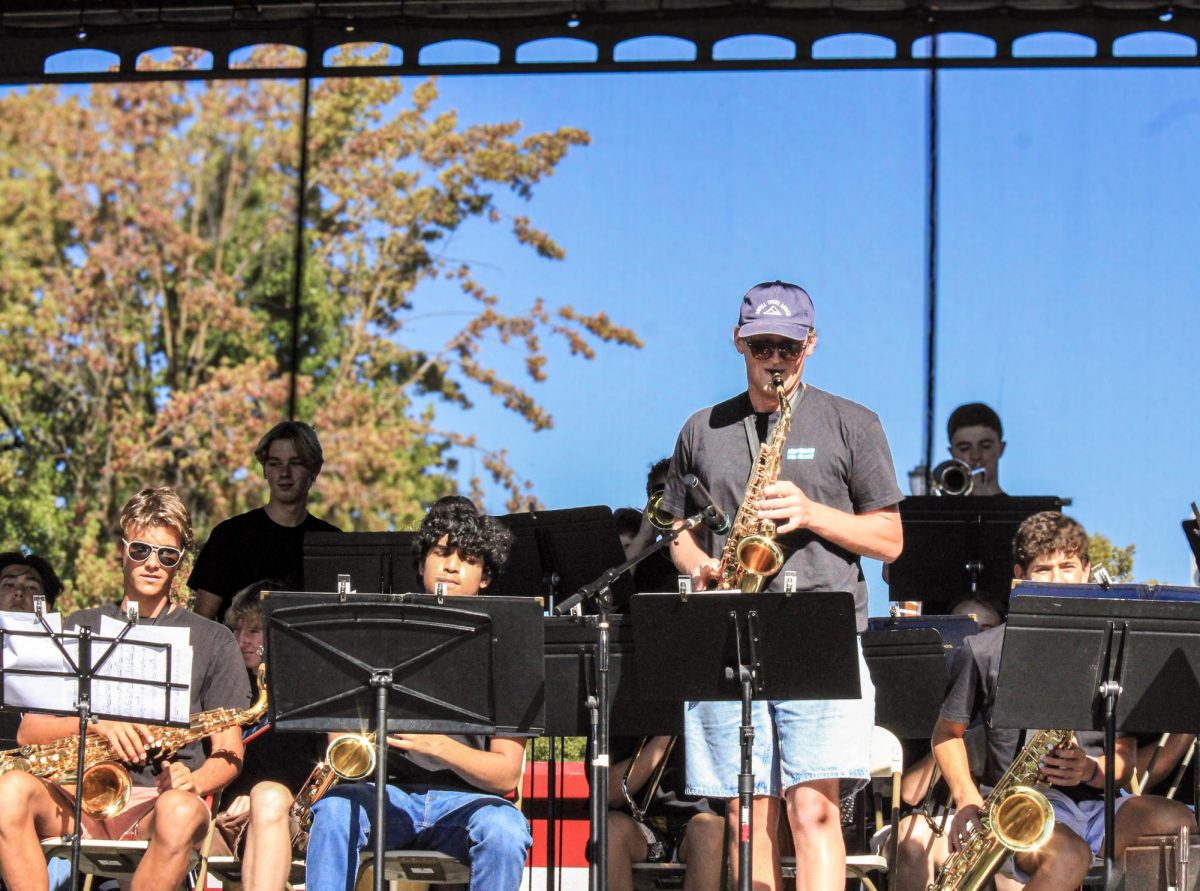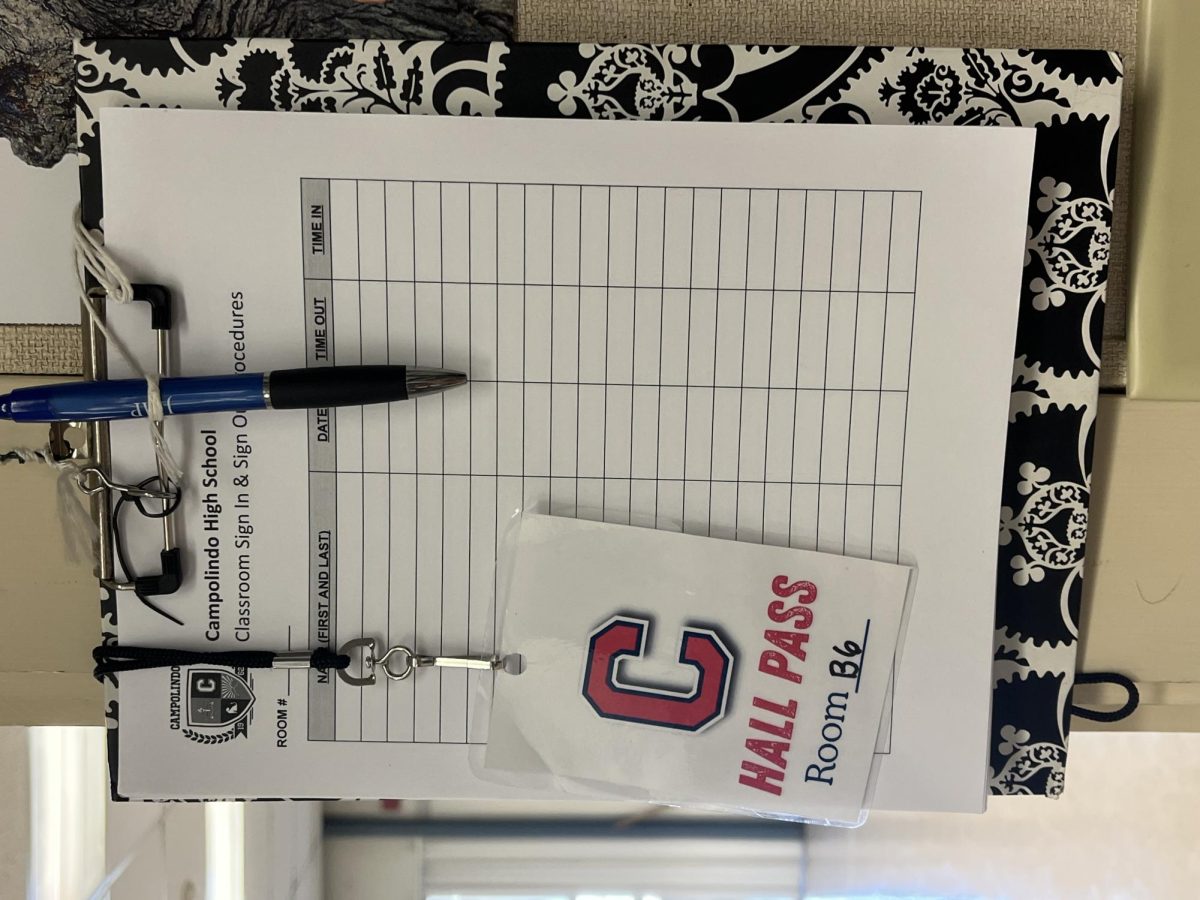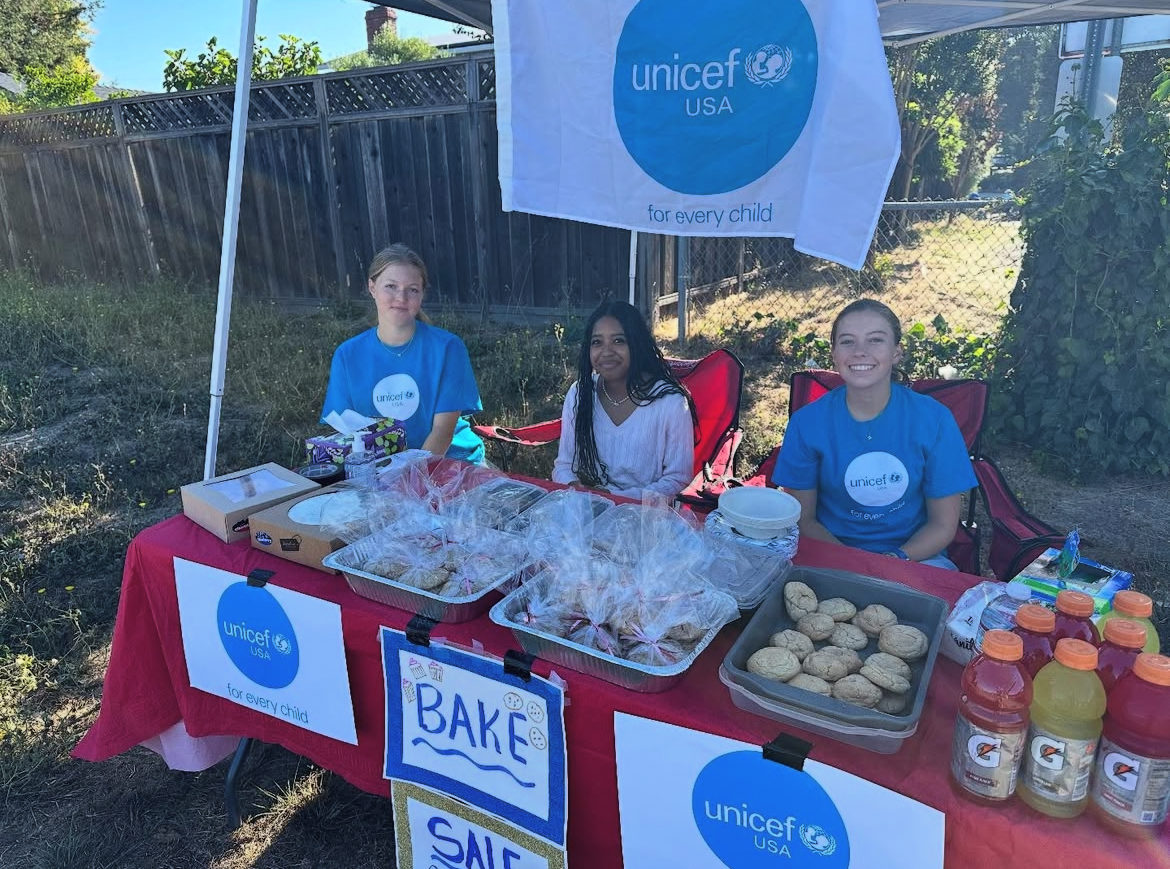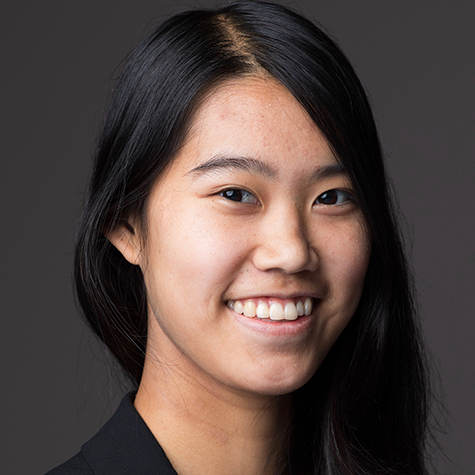32 female junior and senior students attended the first ever Campolindo Women’s Symposium during the morning and early afternoon of April 11 in the CPAC.
Organized by teachers Molly Kerr and Lindsay Webb-Peploe, parent Shari Simon, and seniors Sharon Maher, Emily Fong, Regan Gong, and Kelly Williams, the symposium was held to provide a space for students, teachers, alumni, and community members to talk about what it means to be a woman in the 21st century.
The day featured several discussions, hands-on activities, and guest speakers.
Junior Natasha McCullough attended to learn more about women’s issues. “I just thought it would be a good space to discuss feminist issues in a place where you’re not going to be judged by your peers. [It’s] a sort of safe place to talk about your opinions and other’s opinions and become more educated,” McCullough said. “A lot of people at Campo think of feminism as this sort of scary concept, or something that’s radical or different, when in reality, I think that it should be something that is really easily accessible and something that anyone can be a part of. So I think that this is a safe space in the sense that everyone here is okay with feminism and is okay with talking about it.”
The first discussion topic was the media’s portrayal of women.
“In this day and age when everyone’s connected through social media, there’s a constant kind of divide on how you’re going to portray yourself in media. How you want yourself to be shown to other people, whether or not you see them on a day to day basis. Whether that’s Instagram, or Facebook, and just with media, since we always see it and we’re always comparing ourselves to other people, like how many likes do you get, or how many followers you have,” Gong said. “It’s definitely relevant, just because we’re constantly around it and we constantly have to put ourselves out there in a different sort of world/way.”
Fong added, “It shapes you deeply on a psychological level, because you’re seeing not just your perception, but also what people want you to be like. So inherently, that’s something really powerful that’s going to mess with a lot of people. Especially now.”
Fong cited a statistic that people see, on average, 400 to 600 pictures of women a day. “It’s alarming to think that a large majority of them are edited. The fact that people are holding themselves to these standards that don’t really exist,” Fong said.
Teacher Ranie Pearce spoke about swimming the English channel. McCullough called the speech “really inspiring”.
McCullough said, “The talk, I found, was less about feminism and more of a motivational speech about, don’t let anything hold you back.”
Pearce’s presentation was followed by an “inter-generational panel discussion” that included Fong, associate principal Karen Findlay, counselor Jake Donohoe, and teachers Tina Mayer, Jessica Hoffschneider, and Kerr.
“It was where teachers and faculty of various ages and also Emily Fong, a student, talked about their experience as teenagers,” Kerr said.
Maura Wolf, an author who teaches leadership at St. Mary’s College, led an activity asking students to “reflect on stories that they hold in their minds about themselves and about their futures, and how those are empowering or disempowering to them,” in her own words.
Planning for the symposium began in January. Simon said Kerr initially contacted her in December to ask if she was interested in helping, because 2 years ago Simon had spoken at a Campolindo business club meeting.
Simon, Kerr, and Webb-Peploe began by meeting every two weeks. In the months leading up to the symposium, it was every week during lunch, or whenever they had free time.
“We knew we kind of wanted to do it on a Saturday morning, and we looked for any Saturday that didn’t have an SAT or an ACT that wasn’t prom or something else, and the only date that was available was April 11th. And that’s the date we came up with,” Webb-Peploe said.
“We wanted to create a place where people were eating together and mingling together, and so we were like, ‘Let’s do something that has a light breakfast, a light lunch, and then maybe end with one session after lunch.’ So that’s kind of the way the day took shape,” Webb-Peploe added. “And then we really just put our feelers out to everybody that we knew to say like, ‘Who could participate, and then what does this look like?’ and then this just kind of organic process that ended up being what it is today.”
Every part of the symposium was carefully crafted by Webb-Peploe, Kerr, Simon, the student leaders, and focus groups made up of junior and seniors.
Choosing the focus for the day was difficult. “There are so many different topics that are really interesting that impact women directly. So, I mean, you could have a whole day on what’s happening to women worldwide. You could have a whole day on women’s education. You could have a whole day on women in science. Or women in tech, or women in the arts. Or you know, issues of sexual harassment,” Webb-Peploe said. “We could go on. But we had to pick something. So we just picked something that seemed broad enough that everyone could lend their voice to, and then the idea is from here forward, that the group of student leaders that emerges – they pick the topic.”
According to Webb-Peploe, the event was called a symposium because they “wanted to create a sense that there would be some intellectual discussion that would be happening throughout the day.”
Webb-Peploe and Kerr originally planned to require students to obtain recommendations in order to attend, because they “didn’t know if people wanted to come.” However, when they emailed all the teachers on campus asking for names of students who were interested, Webb-Peploe said they “basically got every single person in the junior and senior classes, so we were like, ‘Well that’s silly, we should just invite everybody.'”
No males were present at the women’s symposium. Gong said that every junior and single girl was personally invited, and that “the guys were welcome to come too.”
“You can’t have any event that is exclusive to one gender or the other, but it was a symposium that was focused on women’s issues, so we wanted to say in the various classes, certainly if there is a young male student that wants to come and join that discussion, they are more than welcome, but the topics lend themselves to more of women’s issues,” Kerr said. “But I also think it would be great if male faculty held a men’s symposium. In all fairness, I think there are separate issues that reside with young men and women, so this would be great.”
Webb-Peploe and Kerr hope to turn the symposium into an annual, student-run event. Webb-Peploe said that “lots” of attendees signed up to help plan the event next year. Simon also said that in future years, they hope to bring more alumni back to be mentors.
Organizers and students alike were pleased with how the symposium turned out.
McCullough said, “I thought it was interesting how a lot of people talked about how they struggled with identifying with the traditional female role. I think a lot of people may see themselves as more of a tomboy, or may not perfectly fit into the gender binary, and that’s okay.”
Simon said, “I’m really pleased, actually. The goal for today was to have young women participate, and engage, and I think leaving here more thoughtful and introspective and empowered, and I’m going to leave it up to the students to say whether that objective was meant, but my sense was that those objectives were achieved.”
Webb-Peploe and Kerr said they worried about whether or not people would show up, and were excited to see that they did.
“Ms. Webb-Peploe and I, our goal was to empower young women, make them feel better about themselves, and what they can achieve in the world. And I’m not not naive to think that one day does that, but hopefully it’s along those lines of building self-confidence and feeling empowered to be a woman in America,” Kerr said.
